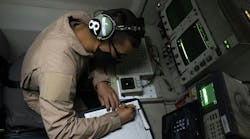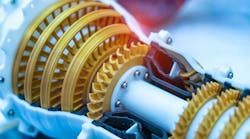by John Keller
CANOGA PARK, Calif. — Engineers at the Boeing Missile Defense Systems Division in Canoga Park, Calif., plan to demonstrate how well an advanced tactical laser system can perform on the battlefield.
Military experts say tactical lasers, which have an effective range of at least 12 miles, could quickly and inexpensively destroy antennas, shoot down missiles and aircraft, disrupt communications, blind sensors, shoot out vehicle tires, destroy sheet-metal structures or civil vehicles, disable power and phone lines, or even detect enemies from the glint of their eyes or rifle scopes — all without causing collateral damage.
Officials of the U.S. Special Operations Command at MacDill Air Force Base, Fla., are negotiating with Boeing to conduct an advanced concept technology demonstration of the advanced tactical laser. Special Operations Command is acting on behalf of the U.S. Department of Defense (DOD).
Special Operations officials say Boeing is the only company with tactical laser technology advanced enough for this project. Boeing also is developing the Airborne Laser System, which is to shoot down ballistic missiles from a specially equipped Boeing 747 cargo jet.
DOD officials are interested in mobile tactical lasers that could operate from ships, trucks, Humvees, helicopters or C-130 turboprop aircraft. Cost and speed are two other advantages of tactical lasers, officials say. Lasers have virtually no time lag between target acquisition and firing, and cost far less per shot than missiles and precision munitions.
For the demonstration, Boeing experts are to use their chemical oxygen iodine laser — better known as COIL. Company engineers have developed and demonstrated a 20-kilowatt COIL that eliminates effluents with a sealed exhaust system.
Special Operations Command officials say Boeing's 20-kilowatt COIL is an important step in developing a low-risk tactical laser system that Boeing engineers eventually should be able to scale up to a larger system. Boeing scaled up to 20 kilowatts from a lower-power device by lengthening the laser's active chamber.
DOD officials say they plan to award as many as four separate contracts to Boeing for this project over the next five years, and will pay as much $250 million.


